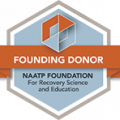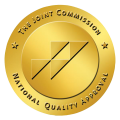When it comes to personal health, anxiety can be a tricky thing to tackle. It often ties into a number of underlying issues and presents itself in a variety of ways. If left untreated and coupled with substance abuse, it can risk a person’s life. That’s why it’s important to recognize the warning signs of anxiety and take the necessary steps for recovery.
Whether you’re dealing with anxiety yourself or caring for a loved one, you don’t have to go through this alone. There are treatment options available for people dealing with both anxiety and addiction so that they can get their lives back on track. In this article, we’ll take an in-depth look at the signs, symptoms, and causes of anxiety, how it ties into addiction, and what types of treatment are available.
There are several different types of anxiety disorders, including generalized anxiety disorder (GAD), social anxiety disorder, post-traumatic stress disorder (PTSD), obsessive-compulsive disorder (OCD), and panic disorder. While signs and symptoms vary depending on which type of anxiety disorder is present, common symptoms include excessive worrying, feeling on edge or tense, restlessness or irritability, a racing heart rate or palpitations, and trouble sleeping.
Underlying Causes of Anxiety
Underlying causes of anxiety can be complex and varied but can often include genetics, brain chemistry and hormones, environmental factors, stressful life events, past traumatic experiences, physical health problems, and substance abuse. It’s also important to note that when it comes to anxiety and addiction, they often occur together. Someone who’s dealing with an untreated mental health issue like anxiety may turn to drugs or alcohol for relief from the negative feelings and emotions associated with the illness.
For anyone who might have both an addiction and an underlying mental health issue like anxiety, seeking a good treatment center in The Woodlands, TX that offers dual-diagnosis treatment programs involving a combination of therapies and support to address both mental health and addiction issues is crucial.
Types of Anxiety Disorders
Generalized Anxiety Disorder (GAD) is a common mental health condition characterized by excessive and persistent worry about various aspects of life, such as work, relationships, health, or finances. People with GAD often find it difficult to control their anxiety, even when there is no apparent reason for concern. This constant state of worry can interfere with daily activities, relationships, and the overall quality of life.
Anxiety disorders like panic disorder are characterized by frequent, unplanned panic attacks. A panic attack is a sudden surge of intense fear or discomfort that typically peaks within minutes and can include a variety of physical and psychological symptoms, such as rapid heartbeat, shortness of breath, dizziness, and feelings of impending doom or loss of control.
An extreme fear, anxiety, or discomfort in social settings characterizes social anxiety disorder, sometimes referred to as social phobia. People with this disorder excessively worry about being judged, negatively evaluated, or rejected by others. This fear often leads to avoidance of social situations, causing significant distress and impairment in daily functioning.
The mental health disease known as post-traumatic stress disorder (PTSD) can appear after experiencing or witnessing a traumatic incident, such as a natural disaster, major accident, terrorist attack, war or conflict, sexual assault, or the unexpected death of a loved one. PTSD affects individuals differently and can cause a wide range of symptoms that interfere with daily functioning and the general well-being.
A specific phobia is a form of anxiety disorder that is defined by a strong, illogical dread of a particular thing or circumstance. This fear is disproportionate to the actual danger posed by the object or situation, and it often leads to avoidance behaviors and significant distress in daily life. There are several types of specific phobias, which can be broadly categorized into five main groups:
- Animal phobias: Fear of specific animals, such as dogs, snakes, or spiders.
- Natural environment phobias: Fear of natural occurrences or situations, such as heights, storms, or water.
- Situational phobias: A fear of particular circumstances, such as driving, flying, or being in small spaces (claustrophobia).
- Blood-injection-injury phobias: Fear of blood, injury, needles, or medical procedures.
- Other phobias: Fear of specific objects or situations not covered in the previous categories, such as choking, vomiting, or loud noises.
Signs and Symptoms
- Excessive worry or fear
- Feeling restless or on edge
- Irritability
- Difficulty concentrating or racing thoughts
- Constantly anticipating the worst and being overly cautious
- Fatigue or feeling easily tired
- Rapid heartbeat or palpitations
- Shortness of breath or hyperventilation
- Sweating
- Trembling or shaking
- Dizziness or lightheadedness
- Gastrointestinal issues, such as nausea, diarrhea, or constipation
- Muscle tension or muscle aches
- Insomnia or difficulty falling or staying asleep
- Frequent urination or diarrhea
- Poor concentration
- Memory problems
- Difficulty making decisions
- Persistent negative thoughts or rumination
- Perceiving situations as threatening, even when they’re not
Underlying Causes of Anxiety
The development of anxiety disorders could be influenced by genetics. Scientists have found that some families are more prone to certain mental health disorders than others. Research suggests that some people may have certain genes that make them more vulnerable to developing anxiety disorders or other mental health issues.
The environment we live in can also influence our risk of developing anxiety. If someone grew up in an environment where their parents or guardians were frequently stressed out, had a substance abuse problem, or experienced a traumatic event, they may be more likely to develop an anxiety disorder later on in life. Studies show that people who grow up in toxic or unpredictable environments are more likely to develop an anxiety disorder than those who don’t.
Traumatic events can also increase the risk of developing anxiety disorders. Experiencing a traumatic event can lead to post-traumatic stress disorder (PTSD) which is characterized by intrusive thoughts, flashbacks, and nightmares related to the experience. People with PTSD often feel anxious and struggle with persistent worry and fear.
Why Anxiety and Addiction Often Co-Occur: The Self-Medication Hypothesis
The self-medication hypothesis suggests that people may be using drugs and alcohol to cope with their anxiety. In other words, individuals with anxiety might be engaging in substance use to try to dull their symptoms or temporarily ease the distress they experience due to their anxious thoughts or uncomfortable physical sensations.
Some signs that someone might be self-medicating include:
- Using drugs or alcohol as a way to relax or cope with stress
- Experiencing a sense of relief or feeling of calmness after using substances
- Choosing to be alone while using substances, suggesting the desire for privacy
- Participating in hazardous behaviors while under the influence of substances
- Neglecting personal responsibilities in order to use substances
- Developing tolerance and displaying signs of withdrawal during abstinence periods
It’s important to note that self-medicating is a coping mechanism and not a treatment for anxiety. For long-term relief from anxiety, it’s important for individuals to engage in evidence-based treatments like Cognitive Behavioral Therapy or medications like antidepressants or antianxiety medications. A qualified mental health professional can assist individuals in finding the best treatment plan.
How Do you Help Someone with Anxiety and Addiction
First, it’s important to understand that anxiety disorders can affect people in different ways, and that the symptoms and intensity of each disorder can vary from person to person. Learning about the disorder together is encouraged as a way of creating empathy between you and your loved one. By doing so, it can help reduce any misconceptions about mental illness or substance abuse problems.
It is also advised to know what anxiety and addiction treatment programs are available for your loved ones. The more you know, the better you will be able to provide support for their recovery.
The best way to help someone with anxiety and addiction is to offer support. Make them feel that you support them in their efforts to take the first steps toward seeking help. Encouraging them to speak with a health professional, like a licensed therapist or psychologist, can be helpful.
It can be difficult to hear of a friend or family member dealing with both anxiety and addiction—try your best not to jump to conclusions or start offering solutions right away. Instead, listen carefully and let them know that you understand where they’re coming from—this can be incredibly therapeutic for them.
In addition, try not to judge the person—understanding why someone may turn towards substances as an escape from anxious thoughts and feelings can help create an environment of non-judgmental acceptance.
Encouraging positive lifestyle changes is another excellent way of helping someone with anxiety and addiction—things such as exercising regularly or engaging in activities like yoga can increase overall well-being and reduce stress levels, which could reduce anxiety symptoms.
Dual Diagnosis Treatment at Magnolia City Detox
Magnolia City Detox offers treatment for individuals dealing with a dual diagnosis. Some of our most common anxiety and addiction treatment program options include:
- Medical detox is a process of withdrawing from addictive substances, using medications to make the experience more comfortable, and monitored by medical supervision.
- Residential Treatment is a type of addiction treatment that involves patients living at the treatment facility. This enables them to receive attention and supervision around the clock. Most patients who choose this kind of treatment suffer from serious addictions and require a higher level of care than in outpatient programs.
- Stabilization Program refers to the practice of offering customized addiction services to individuals who have just successfully undergone a detox. It entails establishing a secure, welcoming environment where addiction recovery can start to take place as well as engaging with an individual to stabilize their physical, emotional, and mental well-being.
With proper treatment and ongoing support, you can gain control of your life and achieve recovery. Contact us now to discuss the best treatment options for your condition!

















